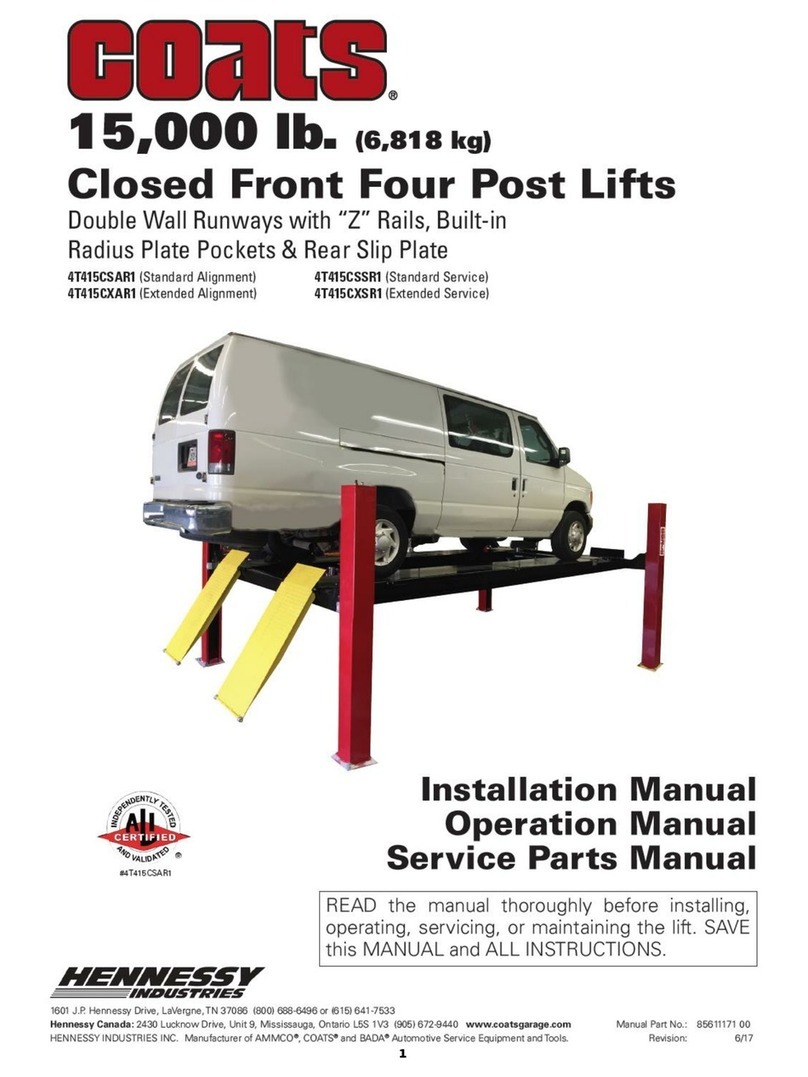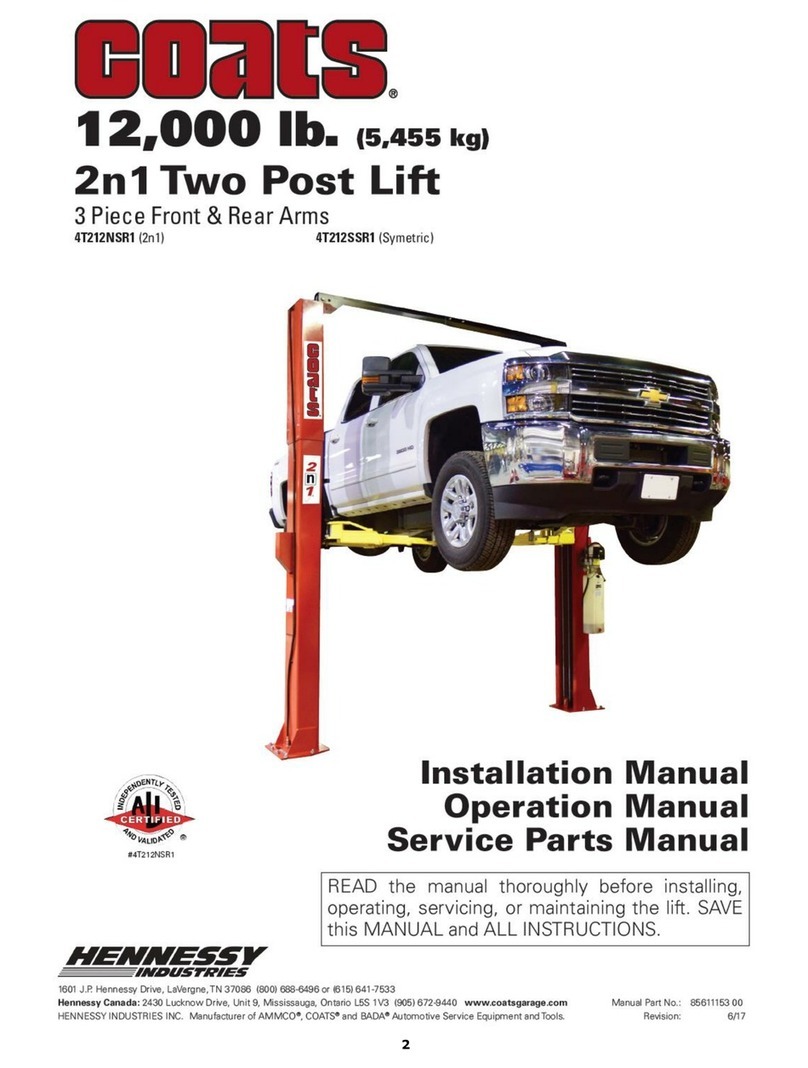8
OWNER/EMPLOYER’S RESPONSIBILITIES
The owner/employer:
•Shall ensure that lift operators are qualified and that they are trained in the safe
use and operation of the lift using the manufacturer’s operating instructions;
ALI/SM, “Lifting It Right” safety manual; ALI/ST, “Safety Tips” card; ANSI/ALI
ALOIM, Standard for Automotive Lifts –Safety Requirements for Operation,
Inspection and Maintenance; ALI/WL Series, ALI Uniform Warning Label
Decals/Placards; and in the case of frame engaging lifts, ALI/LP-Guide, “Quick
Reference Guide –Vehicle Lifting Points for Frame Engaging Lifts”.
•Shall establish procedures to periodically inspect the lift in accordance with the lift
manufacturer’s instructions or ANSI/ALI ALOIM, Standard for Automotive Lifts –
Safety Requirements for Operation, Inspection and Maintenance; and the employer
shall ensure that lift inspectors are qualified and that they are adequately trained in
the inspection of the lift.
•Shall establish procedures to periodically maintain the lift in accordance with the lift
manufacturer’s instructions or ANSI/ALI ALOIM, Standard for Automotive Lifts –
Safety Requirements for Operation, Inspection and Maintenance; and the employer
shall ensure that lift maintenance personnel are qualified and that they are
adequately trained in the maintenance of the lift.
•Shall maintain the periodic inspection and maintenance records recommended by
the manufacturer or ANSI/ALI ALOIM, Standard for Automotive Lifts –Safety
Requirements for Operation, Inspection and Maintenance.
•Shall display the lift manufacturer’s operating instructions; ALI/SM, “Lifting It
Right” safety manual; ALI/ST, “Safety Tips” card; ANSI/ALI ALOIM, Standard for
Automotive Lifts –Safety Requirements for Operation, Inspection and
Maintenance; ALI/WL Series, ALI Uniform Warning Label Decals/Placards; and in
the case of frame engaging lifts, ALI/LP-Guide, “Quick Reference Guide – Vehicle
Lifting Points for Frame Engaging Lifts”; in a conspicuous location in the lift area
convenient to the operator.
•Shall review and understand the proper requirements outlined in ANSI/ALI ALIS,
Safety Requirements for Installation and Service of Automotive Lifts.
•Shall consult with a qualified person to address seismic loads and other local or
state requirements.





























